Nick Crawford is an IDM Tutor, an elected member of the DMA Email Council and Owner of Twist Consultancy, helping business better connect to people through relevant and engaging marketing.
As both IDM Tutor and (via the Email Council) a member of the Learning and Communication Hub, Nick is passionate about helping email marketers develop, linking practitioner experience with training delivery.
Each year the DMA publish research from both Marketers and Consumers on their opinion of email.
In the Consumer Email Tracker 2020 email was once again reported as the best channel in a range of contexts. With consumers preferring it almost twice as much as any other channel: 46% compared to 26% for post, and 24% for text or face-to-face.
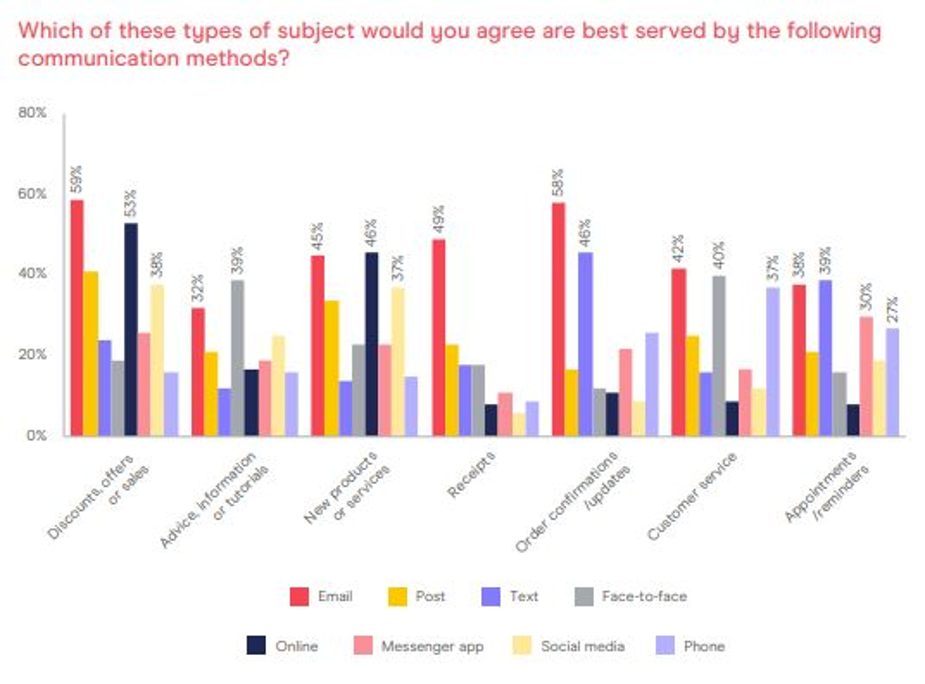
So, given this priority status of email why then do:
- 60% of email marketers believe that their skills are below good
- 45% of marketers report that half of all emails sent are not relevant
- 86% of customers report that over half of emails they receive are not useful
(DMA Marketer & Consumer Email Tracker Reports)
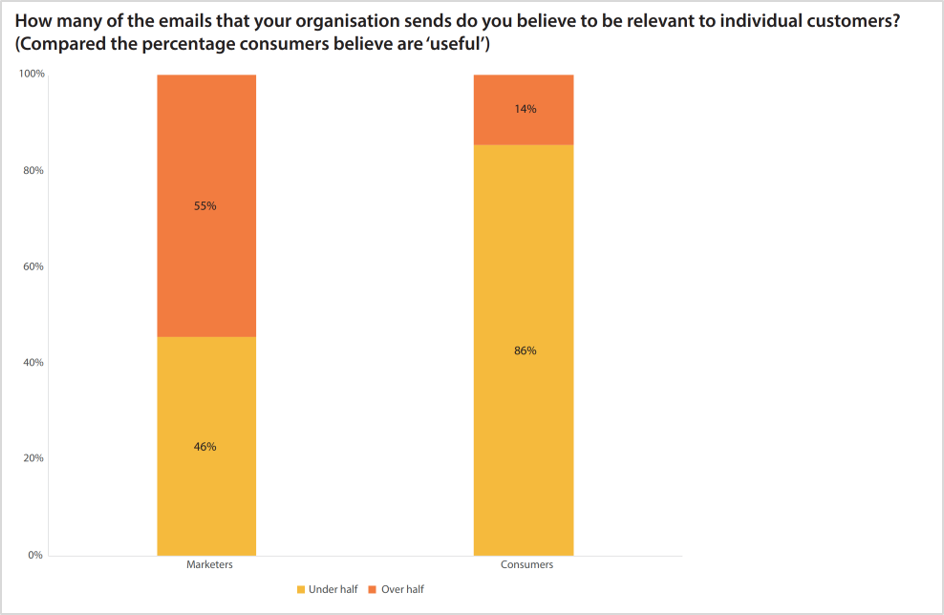
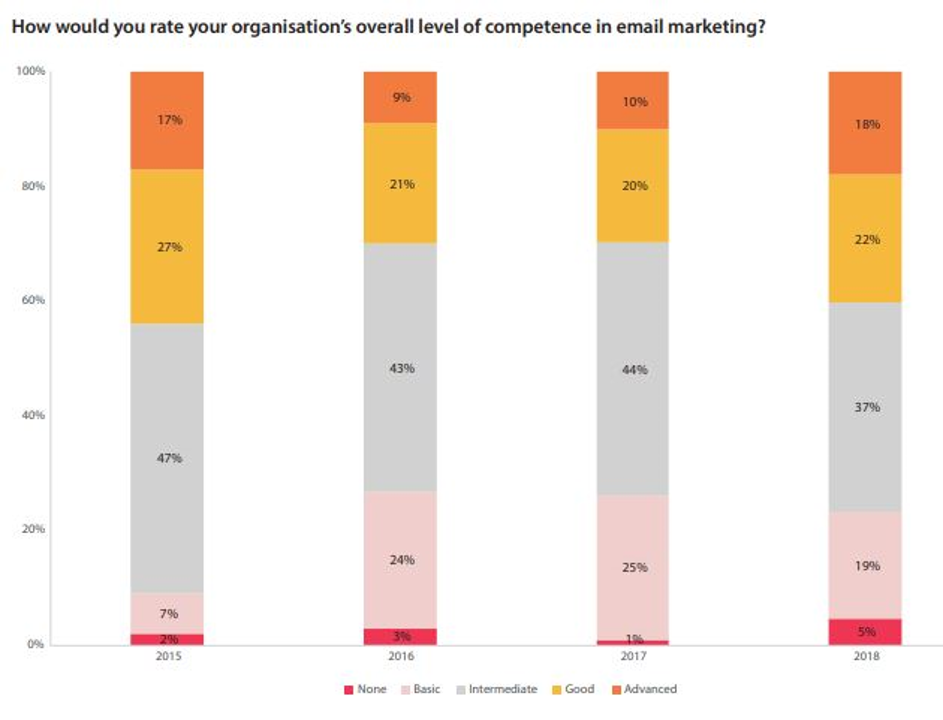
After all, even done badly email works, right…
In part I think it’s because email has become a victim of its own success. Email just works. With the tools provide by most platforms it’s easy to send an email. You’ll see an uplift in traffic and conversion.
Add to this to the low cost of email to deploy, then the perceived risk of poor sends is reduced. ROI of email rises each year, currently reported at £42 back for every £1 spent*. More time is spent planning a direct mail being sent to 30k, than an email send to 1m because of the cost.
Reduced priority of email means less support
With less care and attention being given to email, then those individuals planning and sending emails receive reduced skills development.
Often training is based on a handover with a colleague, who in turn gained their knowledge from a predecessor. This leads to diminishing knowledge simply based on getting the job done from current ways of working. It removes the ability to develop the approach, strategy and delivery.
It is rare to find a company investing in external training for their email team. There is of course a wealth of information publicly available across the industry, but this is much more focused on the ‘what’ rather than the ‘how’.
This also relies on individuals being self-motivated and finding the time to research and absorb. So often in training, the feedback from delegates is ‘I didn’t even know that was possible.’
It’s much harder to both challenge your work status quo and define your development, if you don’t have a view of the art of the possible.
Why should businesses care?
As I said, even poor email works. However, from both a customer relationship and brand value (with the commercial benefit this provides) not focussing on email will have a major short- and long-term impact.
Short term, the relationship you have with your customers has a direct impact on their engagement and spend with you. You won’t see this in your unsubscribes as apathy rules email inbox management, but you will see a decline in the open, click and conversion from maturing sign ups.
In the 2019 DMA email tracker, consumers where asked “how they would want to manage the communications they receive.” The top response was ‘to reduce the frequency of emails’ (36%) However I would challenge this. Consumers want more not less information when its relevant and of interest.
I have sat in many focus groups where consumers start by telling us that they feel bombarded with email, but when talking about something they are interested in e.g. music gigs or good food, they are quite happy to receive all information available, at high frequency, on these topics.
When its relevant, it’s not a nuisance.
Longer term damage is being done to brand perception. As the study from Binet and Field clearly shows, brand building provides more sales growth in the long term.
If done well, Direct Marketing (especially email) enables relationship building and truly customer centric activity. Can a brand really afford not to give a higher priority to this key channel?
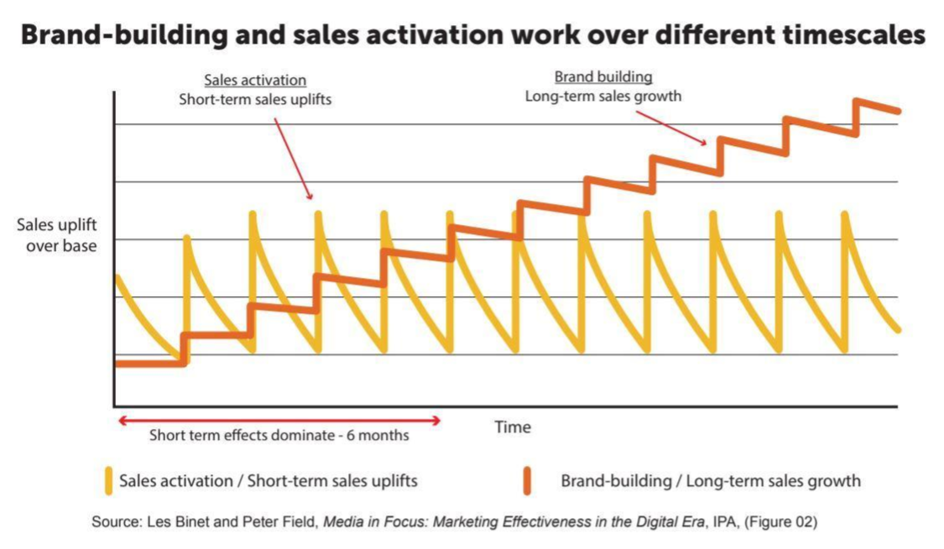
OK email is not OK
And so, on this basis I offer the rallying cry that “ok email is not ok.” Simply sending irrelevant campaigns will damage the ability for a business to use this key channel over time. Diminished results will not be compensated forever by simply sending at volume or from new sign ups. And let’s not even start on the deliverability impact from a reducing reputation. If you can’t even hit the inbox, no amount of effort is going to help.
So how do we avoid this?
Businesses need to provide email with the priority and resource it merits. With this comes the need to help, support and challenge your email marketers. After all, to be a good at email takes a width of skills not always appreciated with the perceived simplicity of creating and sending an email.
Key areas covered in the IDM courses include:

- Data
- Strategy
- Campaign and In-life planning
- Creative & Content
- Segmentation, Targeting & Personalisation
- Automation; Trigger Sends & Content
- Reporting, Analytics & Trend Measurement
- Testing & Optimisation
- Technology
Like Lego (other stackable building blocks are available) the ability to understand each of these areas and then put them together is the key to creating a complete and powerful email marketing delivery.
“Ok email is not ok” and here’s 5 areas to focus on to combat this:
Take the time to plan
Planning is the foundation of any marketing success.
Can you answer these 3 questions of your planning – the 2nd part ensures you have planned in detail.
- What is the primary purpose and what value is that to the reader?
- What do you want the reader to do and how easy is this?
- Who is this message most relevant to and can we identify that audience?
With a clear articulation of the strategy and planning this will then feed directly into the tactics and delivery. It will inform all the execution from whom to send to, to copy and ‘call to action’ language. What next action you want the reader to take and your success metrics and reporting.
Take your readers on a journey
Marketing is not a hit and run. This about where the customer is now, what they want (as well as what your business wants – this should be mutual) and how best to help them get to that next point. Take it in stages. This way of customer centric thinking:
- Put the readers need at the centre of your marketing
- What they want today will not be what they need tomorrow
- Take the time to woo and court your customers
This journey approach and its focus on putting the customer first can really be seen in the DMA Award winners for best use of email**.
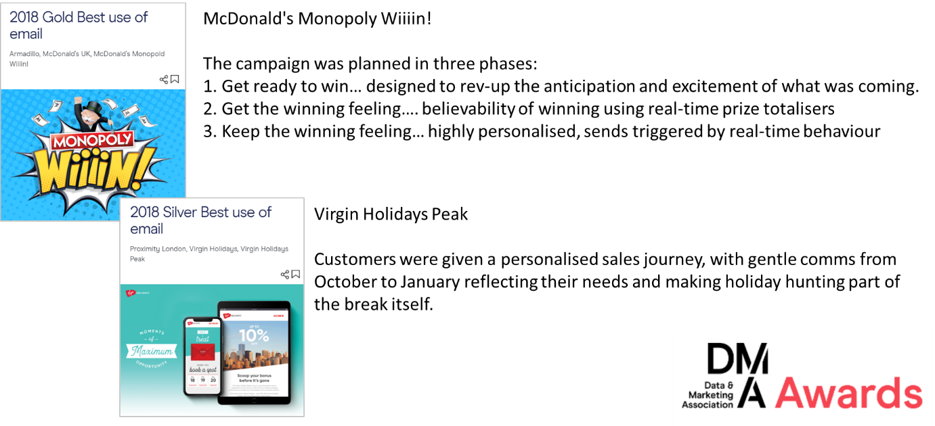
Use the technology available
As this study from Holistic Marketing*** shows, only 30% of marketers use more than 60% of their ESP functionality.
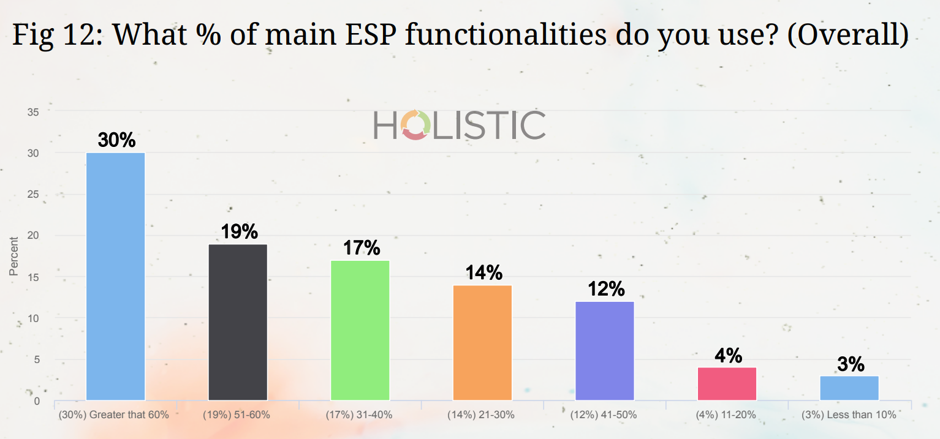
In part this will be a further impact any knowledge gaps in the email team. Process and delivery being based simply on the team induction they had, based on the stagnant knowledge of previous team members.
In part it’s a result of the lack of support from self-service platform vendors and agencies, who rely more on users being able to define their own development and maturity, rather than actively helping support them through account and success teams.
At the point this frustration gets too much for a business, they often look to move providers to solve these problems. As a first step I would always advise being clear about what you want to achieve and what different would look like tomorrow. Then see if your current platform can achieve this.
As a second step, could a smaller tech addition to the stack provide the function and capability you want, rather than a complete change.
In the same research from Holistic Marketing the use of multiple solutions to create a full solution is apparent.
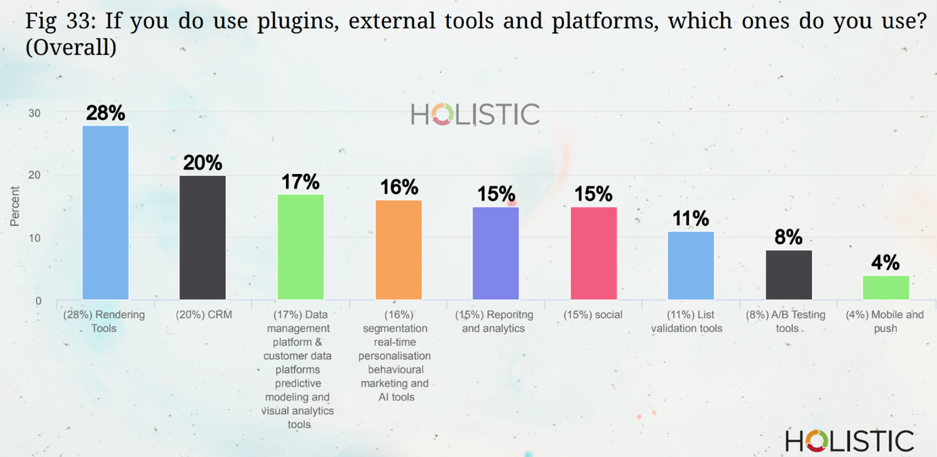
’Give’ as well as ‘Take’ with your content
Take a look at the key content messages you’ve sent over the past month. Now label these as:
‘ASKS’: a request or a call to action to the benefit of the business etc.
NB An offer is still a ‘ASKS’ as you’re after a sale/use of services.
Then label all the
‘GIVES’: thank you, update, share, give away, value add etc.
So, how many times do you “ask” for something vs. “give” in your content?
Having run this for a client across first email and then all channels it clearly shows how sending without an integrated channel plan can cause a very one-sided pull in the relationship.
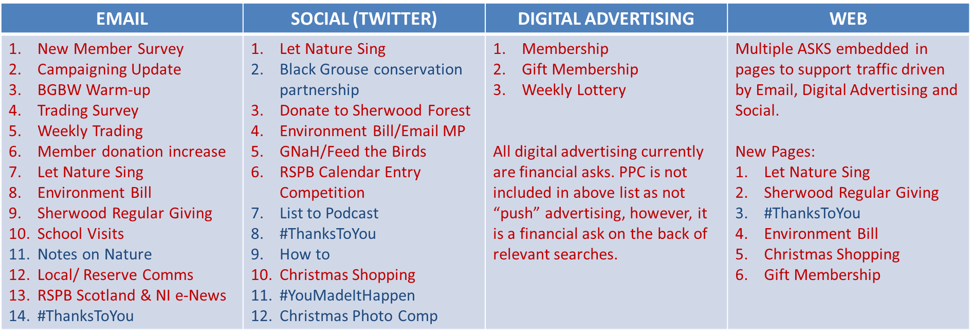

Using this insight to change your approach to a more deliberate balanced mix.
Make the effort with your content
Engagement is the key to great marketing. Engagement can be created through relevance, but this is not always possible depending on lack of insight or channel e.g. broadcast.
Engagement can also be created through interest. Make the effort to create interesting content and you will engage. This will benefit the brand perception even if the proposition is off for the individual at that moment in time.
It doesn’t have to be as complicated as these examples show. No matter your business and product there is a place for fun.
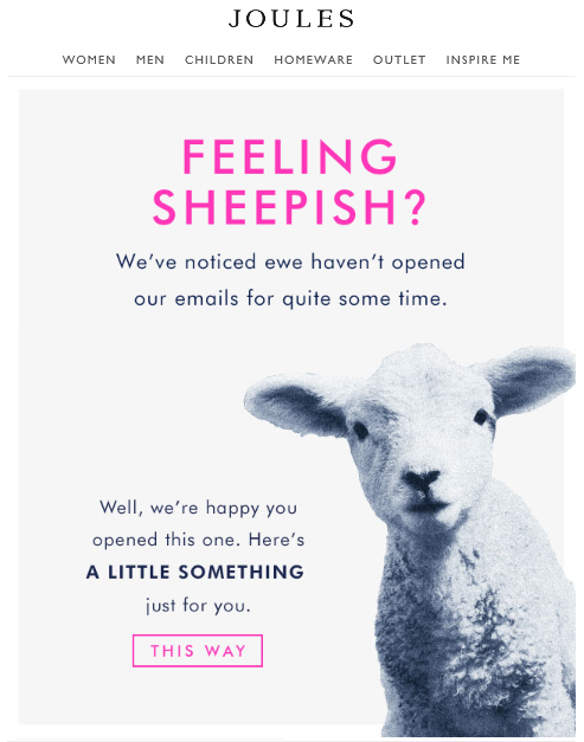
Applicable to both B2B as well as B2C – humour can be used to support a more transactional message. Remind your audience why they engaged with you in the first place.

Simplicity personified. Eye catching content does not need to be resource heavy or highly technical.
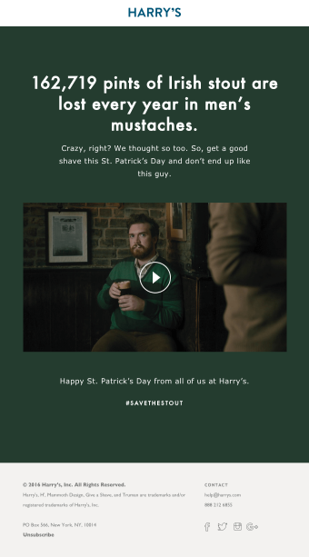
A great use of humour to gain interest in a utilitarian product. Even if you’re not looking for a razor, the entertainment provided would save any feeling of ‘wasted time’ and disengagement.
These 5 areas will help avoid that and create business and personal benefits:
- Take the time to plan
- Take your readers on a journey
- Use the technology available
- ‘Give’ as well as ‘take’ with your content
- Make the effort with your content
And finally, keep scanning the horizon.
The fact that you’re reading this, means I’m preaching to the converted. But it is also all our responsibility to keep looking up and ahead to move our skills and approaches on.
- Be curious
- Stay up to date with industry news
- Find ways to develop yourself
Sign up to blog posts and newsletters from across the industry from other solution providers, 3rd party vendors and marketing organisations.
As a starter for 10 both the DMA and IDM have a wealth of information on their websites, as well as training accreditations and qualifications to keep you developing and adding value to your business.
The DMA Email Council regularly publish thought leadership and industry update pieces. If you would like to attend a council meeting as a guest or get even more involved, you are always welcome. Simply contact email@dma.org.uk
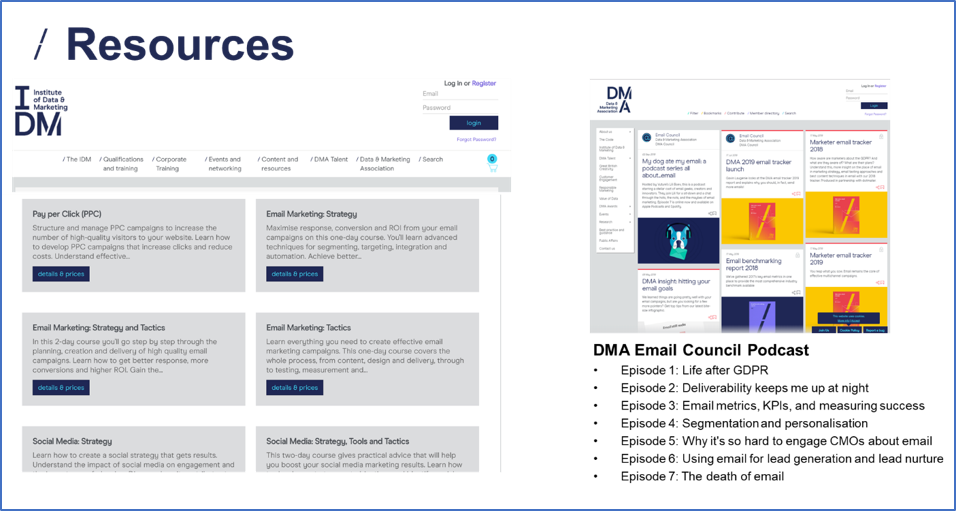
As a first hit why not subscribe to the Email Council podcast My Dog Ate my Email.
Want to learn more about the ins and outs of email marketing? The IDM’s Email Marketing: Strategy and Tactics offers a step by step guide through the planning, creation and delivery of high-quality email campaigns. You’ll learn how to get better responses, more conversions and a higher ROI.
Let’s make email great.
